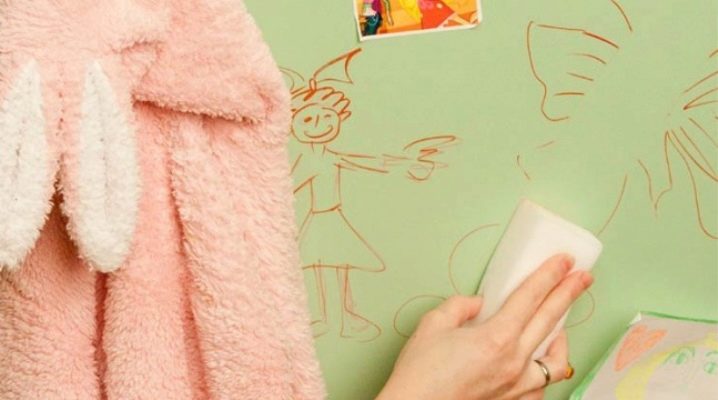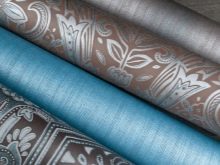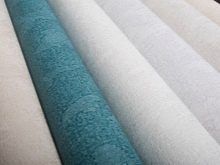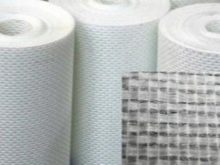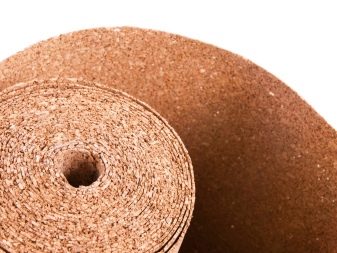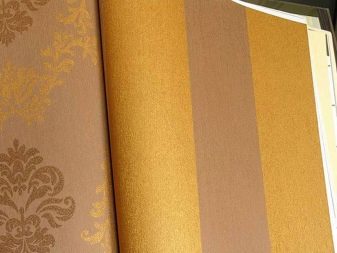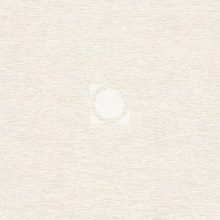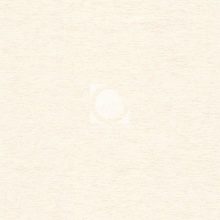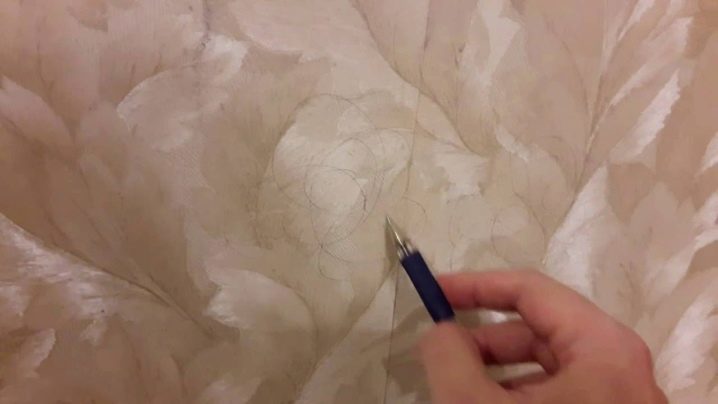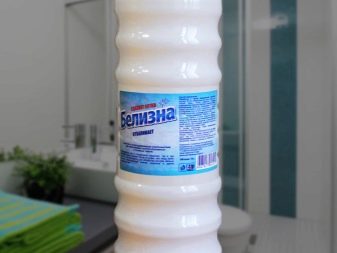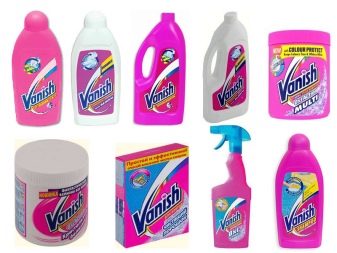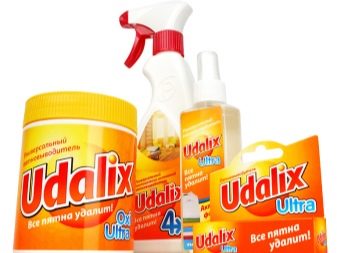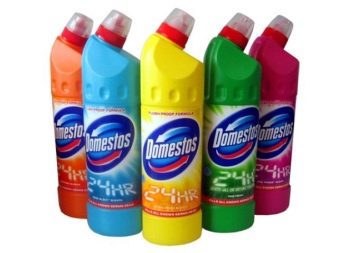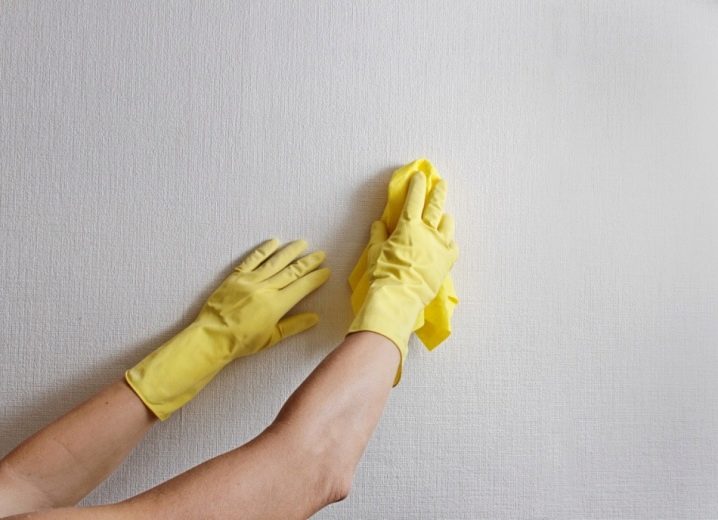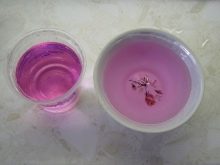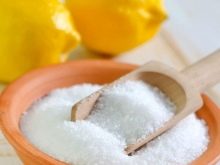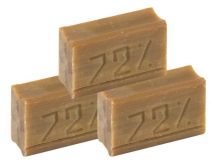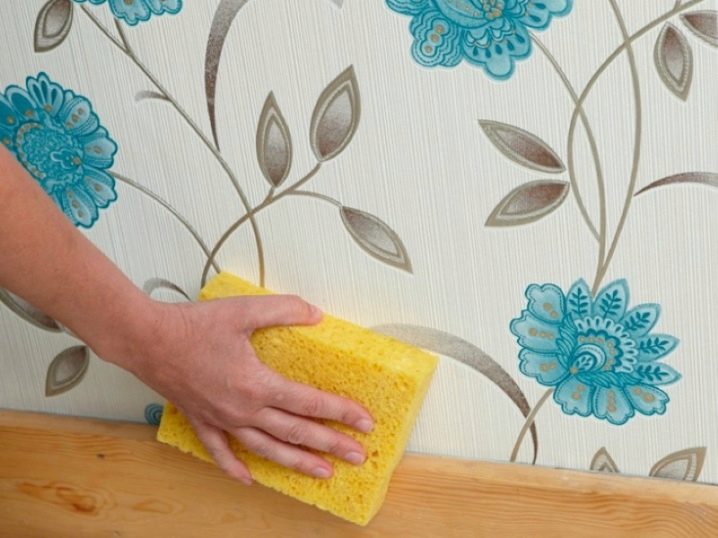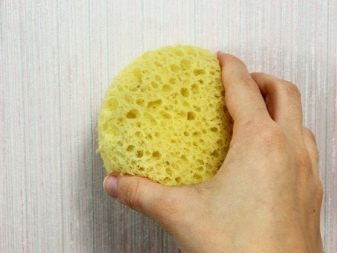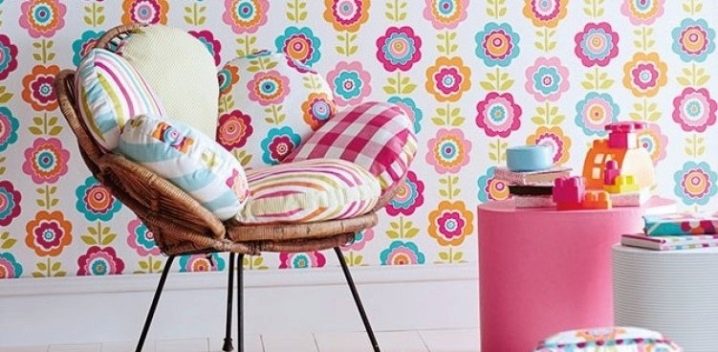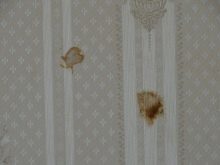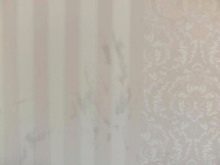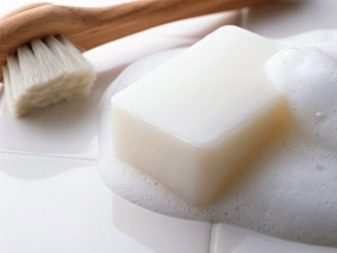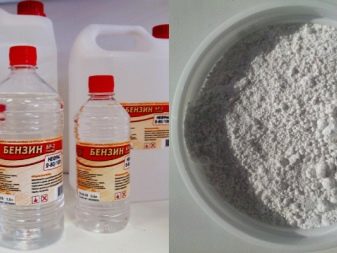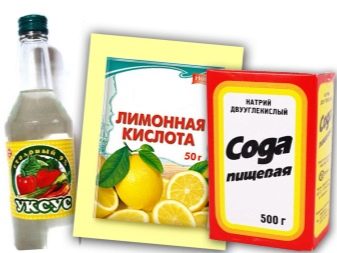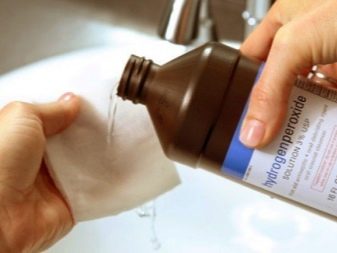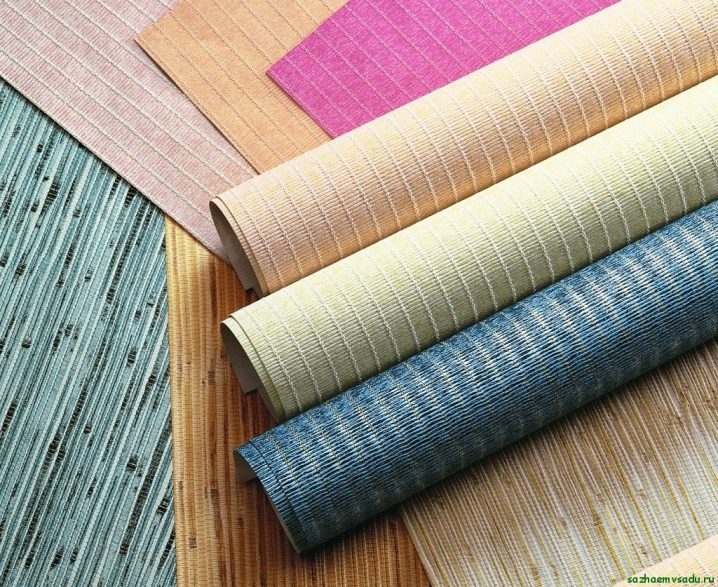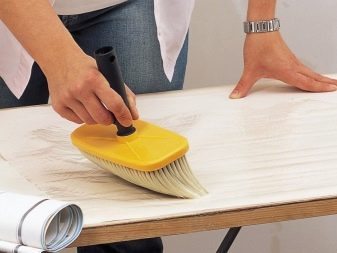Than you can scrub from the wallpaper traces of the handle: effective ways
Than wipe off traces on the wallpaper from a ballpoint pen, often people who have young children think. The fact is that when drawing a child does not always use paper as a canvas. Furniture, flooring, wallpaper can be useful for creativity for the kid.
According to statistics, wall coverings "suffer" more often than others. Children just want to leave their autograph on them, add colorful bright patterns. If you find such tricks of the child on the wallpaper, do not be discouraged and do not rush to purchase new finishing materials for repair. Sometimes it is possible to scrub off dirt and restore aesthetics to the room.
What coatings can I wash?
Unfortunately, not all wall coverings can be wet mopped. If you have pasted the usual paper wallpaper, refuse to wash them. Such finishing materials should not be wet.
Washable coatings include the following types of wallpaper:
- Flizelinovye. The material has a water-repellent surface, impermeable to moisture beyond the upper decorative layer.
- Vinyl. All types of wallpaper that belong to the group can be washed: made of foam, kitchen or flat vinyl.
- Glass fiber The material is made on the basis of glass filaments. To give strength and moisture resistance, the surface of the coating is treated with specialized compositions.
- Cork with wax treatment. Natural coating, which is used in the production of cork. At the expense of water-repellent wax impregnation it is possible to wash material.
- Textile. Wallpaper created on the basis of tissue. Care for such materials should be with caution. Rubbing with a damp soft cloth is allowed.
Allowed to wash liquid wallpaper and wallpaper for painting (if the paint has moisture-resistant properties).
It is also allowed to wash paper coatings on the surface of which a special water-repellent spray is applied.
Not everyone knows that the same types of wallpaper have different resistance to moisture and cleaning compositions. To find out these characteristics, you need to pay attention to the labeling.
Manufacturers put it on the packaging of the material in the form of special symbols:
- 1 wave. Wallpapers with such markings are moisture resistant. However, it is forbidden to wash them. It is allowed to wipe with a damp cloth without the use of detergents and cleaning products.
- 2 waves. Washable materials that are allowed to wash using soapy water.
- 3 waves. Materials with water repellency. Perhaps their washing with the use of any detergent compositions.
- Wave and crest. Products with a surface that is not afraid of water and friction.
- 3 waves and a crest. Materials with enhanced resistance to moisture and severe friction.
When washing and cleaning wall coverings, be sure to consider this information.
Special means
Any stains on the wallpaper, especially the lines from the pen and markers, spoil the appearance of the entire room.If you want to quickly and easily get rid of such "defects" at home, do not over-tighten them. The easiest and most effective way to wipe off recently applied ink.
To remove pen marks, use the following tools:
- Stain removers. “Vanish”, a pencil - stain remover “Udalix”, “Expert” and other means will help to wipe off the ink quickly.
- Bleach "Domestos" or simple "Whiteness" will do. Substances allowed to handle white wallpaper. Chlorine can discolour materials, permanently spoiling the presentability of the dark finish.
- Compositions for washing ("Cinderella", "AOS" and others).
- Cleaners diluted in water ("Pemolux", "Comet").
- Alcohol-containing compositions.
Before rubbing the mark on the handle with the tools listed above, conduct an experiment: apply the substance to the wallpaper behind the sofa or cabinet.
If the material does not change the texture and color, you can safely use the composition on a noticeable part of the wallpaper. So you minimize the possible risks of damage to the surface and avoid premature repairs.
Removal of impurities:
How wallpaper is soiled depends on how it is cleaned.
Ink
Washing is the easiest and most effective way to help remove the gel pen or simple ink. For a more gentle effect on the surface of the finish, it is recommended to dilute the detergents used with water in a ratio of 1: 3. In addition to household formulations, you can use “non-traditional” methods of ink removal for washing.
To erase pen marks, use:
- Freshly squeezed lemon juice. Take 1 or 2 fruits. Squeeze the juice into the container. Moisten a soft cloth in it and apply to the stain. After 1-2 minutes, the ink will begin to brighten.
- Old, but effective way. Dissolve potassium permanganate in 9% acetic acid solution. Moisten the cotton pad or sponge with the resulting compound, apply it to the “problem” area. After 10-15 minutes the pollution will begin to lighten and disappear completely. On the surface of the wallpaper may remain pink stains from potassium permanganate. To remove them, treat the area with hydrogen peroxide.
- Ammonia. To prepare the solution, mix a glass of water with 1 tablespoon of ammonia. Decontaminate with a cotton pad or sponge. After that, remove excess moisture with a napkin.
- Hydrogen peroxide.Rub the contaminated area.
- 72% laundry soap. Grate it, then dissolve it in warm water. Apply the composition to the wallpaper with a sponge, rub it without effort. After that, remove the soap residue with a damp, soft cloth.
Choose the most suitable way to remove stains from the pen.
If one of the proposed methods was ineffective, do not rush to start another.
Wait until the surface of the finishing material is completely dry. Otherwise, chances are great to wipe the pen, and with it to erase the base of the wallpaper.
Plasticine
It is troublesome to remove plasticine from the wallpaper and not damage the surface of the material. However, everyone will be able to "save" the appearance of wall cladding. The easiest will be for those who have smooth wallpaper.
To remove clay, follow these steps:
- Using a scraper, carefully remove the clay (try to eliminate strong pressure on the surface of the material to avoid damaging it);
- heat the remains of plasticine with a hair dryer, periodically blotting contamination with a dry cloth;
- wipe the resulting fatty spot with a damp sponge moistened in a concentrated soap solution;
- dry the wet area of the wallpaper with a hair dryer and evaluate the result.
To remove clay from wallpaper with a relief surface, the above method will not work. Using it, there are great risks to make the pattern on the lining flat and spoil the look of the finish.
If you find plasticine stains on the relief wallpaper - do not panic.
Act on the following plan:
- take a small piece of white plasticine, stick it to the spot and tear it off (do the procedure several times);
- with a hair dryer, heat the remnants of clay and remove it with a napkin;
- wipe off a greasy stain with a damp cloth or sponge using soapy water.
If none of the above methods helped, use the third - "chemical". Buy in the store a specialized tool for removing clay from the wallpaper. Also suitable compositions for cleaning the car's interior or stain removers. However, such methods of removing pollution are not without drawbacks.
By resorting to the "chemical" method, there is a risk of damaging the surface of the material.
If you could not remove the clay, cover the damaged area with the same wallpaper. Before making repairs, you can “mask” a stain with a picture, a vase or other decorative objects.
Other stains
Wall-paper on walls is most of all vulnerable to various pollution. On the cladding material in the kitchen often accumulates fat and soot, in the bathroom due to high humidity fungus can form. Wallpapers in the nursery are often painted by children with pencils or markers. If you find any dirt do not rush to do repairs.
Most types of stains can be removed with “improvised means”.
To clean the walls of various contaminants, different methods are used:
- The pencil can be erased with a soft eraser (the method is suitable only for a smooth lining). If the material is embossed, try to remove traces from the slate with a toothbrush using soapy water.
- If the paint got on the wallpaper - it is fixable. To remove such stains will require gasoline or alcohol. Dampen a cotton swab in one of these components and lightly rub the damaged area.
- Soot is cleaned only with the use of household fat-soluble detergents. To get rid of burning products on the walls, dissolve dishwashing liquid, scouring powder or toilet gel in hot water.Substances contribute to the degreasing of soot and its rapid removal from the surface of the walls.
- Traces of markers may wash with soapy water. If contamination is left with spirit markers, alcohol, citric acid or vinegar will help get rid of them. To remove stains, blot a fleece in any of the materials and wipe the pattern. If the pollution has not disappeared from the first time, wait for the material to dry, then repeat the procedure.
- Traces of lipstick will remove gruel made from vodka and starch. The mixture must be rubbed with a stain, then dried with a hairdryer.
- Blood is easily removed with a cotton swab dipped in hydrogen peroxide.
- Glue on moisture resistant coatings can be removed with a damp cloth. To do this, wet the damaged area, leave for 5-10 minutes to soak the glue, then remove it with a sponge or cloth.
Separately, you need to say about the fungus that occurs on the wallpaper. Mold is dangerous to health, so you shouldn’t delay with its removal. If the fungus was formed on simple paper wallpaper - it is advisable to replace them with new ones.
Non-woven, acrylic and washable wallpaper is best subjected to the "wet" method.To do this, treat the walls with 9% vinegar, chlorine solution (whiteness + water in the ratio 1: 10), or hydrogen peroxide.
Such tools are great against fungus.
Wash away the remains of a mold with warm soap solution.
Care Tips
Wall cladding in any house or apartment is subject to pollution. No matter how carefully the tenants do not handle the wallpaper - trouble still happens. If there are stains on the wallpaper - it is important not to get upset, but to take the necessary measures to eliminate them in a timely manner.
To achieve the best quality in the care of facing materials, you need to remember a few tips:
- If a colored ornament is applied to non-woven wallpaper, if possible, give up wet methods of cleaning dirt. Moisture trapped on poor quality facing materials can dissolve paint and cause damage to the surface.
- Wash the wallpaper only upwards. This way you can avoid smudges and eliminate the risks of stains.
- For thin wallpapers with an embossed pattern, one should carefully use “wet” cleaning methods. Do not rub the surface. Get by with the “blotting” method.This will save the drawing and avoid damage to it.
- If you need to clean the wallpaper, stop using powders and cleaning products containing abrasives. It is better to use a soft brush.
- When removing stains with an iron, carefully monitor its temperature. Overheating of the device often leads to the sticking of the napkin to the surface of the lining.
- Before using any detergent, find out how your wallpaper will “react” to it. To do this, apply the tool on a small piece of lining in an inconspicuous location.
Care for the wallpaper you need correctly. By listening to the advice, you can extend the life of the wall cladding and save money on premature repairs.
For details on how to wipe the traces of the handle with the wallpaper, see this video.
